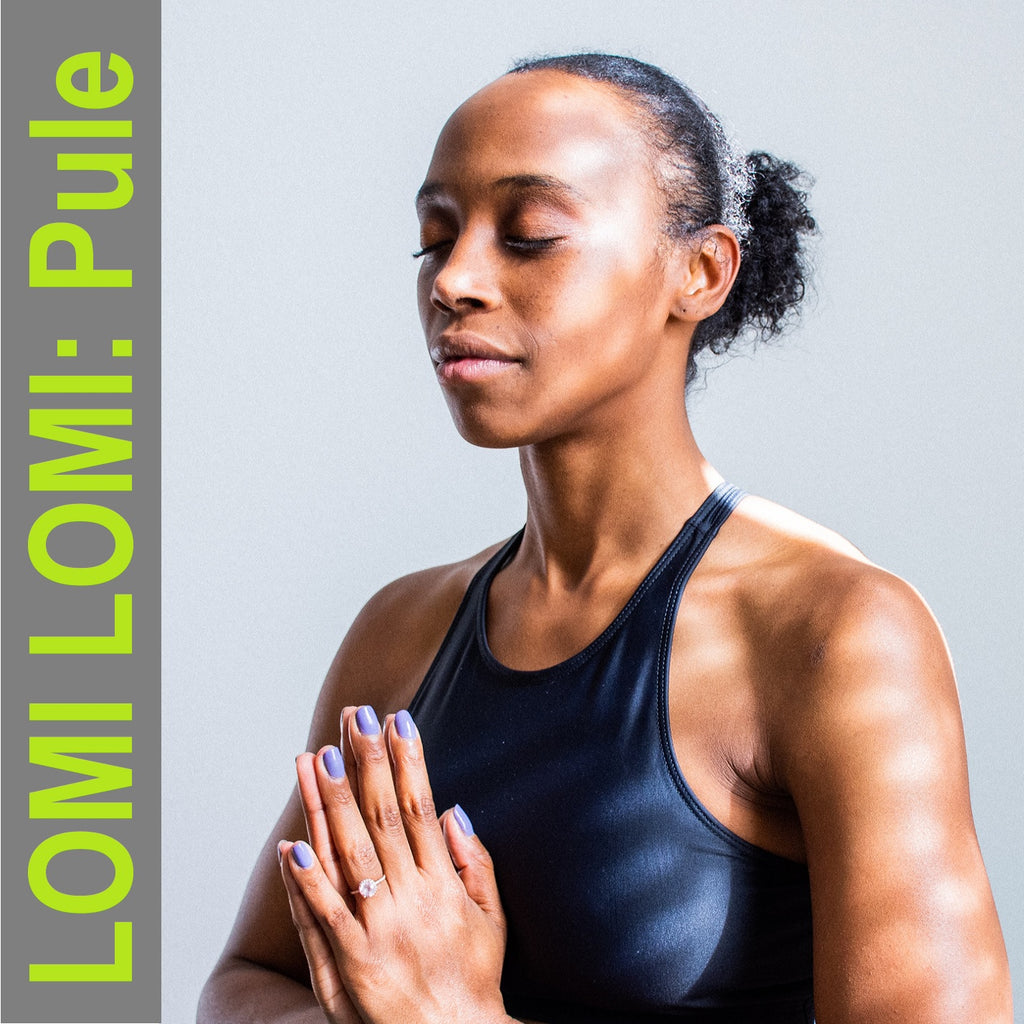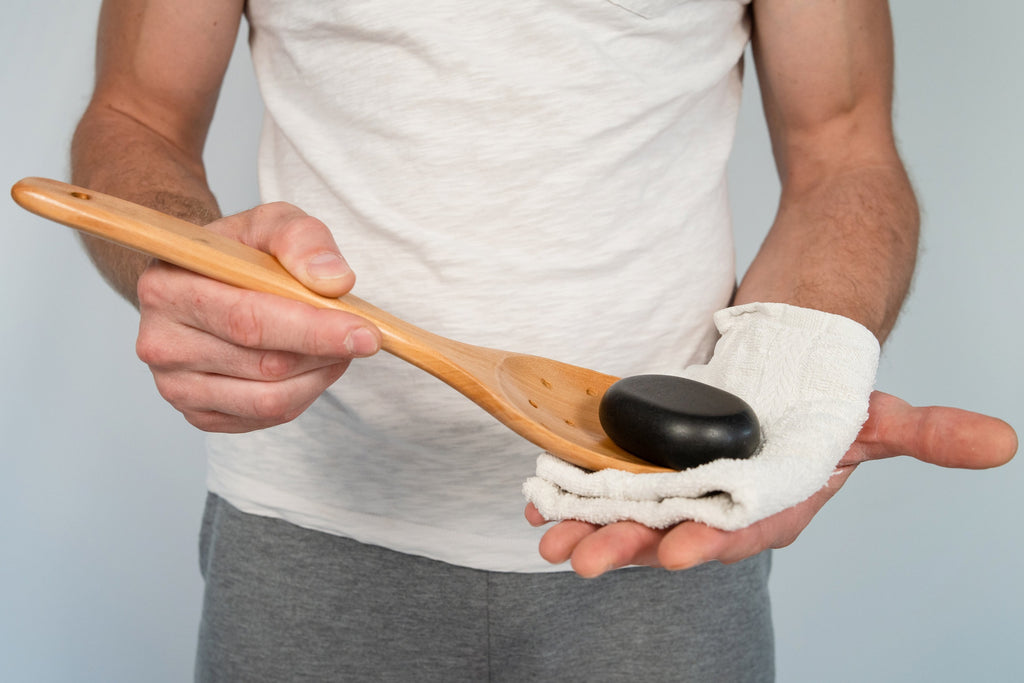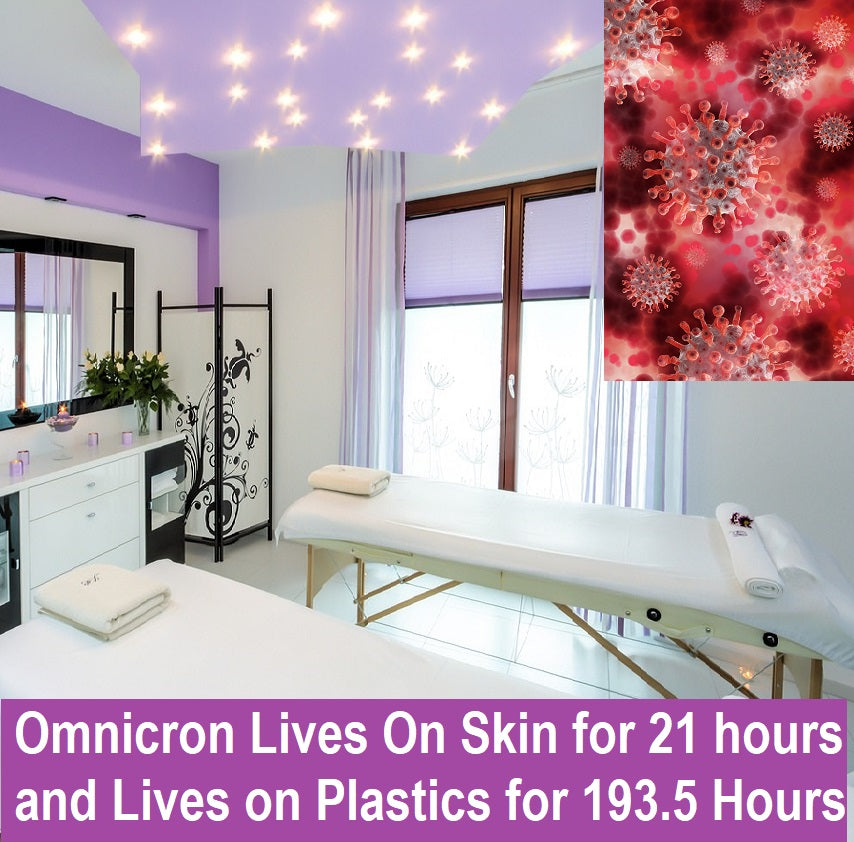By Selena Belisle, Founder/Instructor, CE Institute LLC
Hot Stone Massage Operating Temperature & Placement Stone Practice
Massage stones must remain fully immersed in water to maintain consistent temperature throughout for safe and best practices. At an operating temperature of 135-degrees, stones must be placed through two physical barriers on a client, or kept in motion while using them for massage.
Of course, anyone wishing to practice hot stone massage should seek professional training to do so.
Why Working Stones are Also Called Palm Stones
Also, the 135-degree stones used for massage are frequently called "palm stones" because they are kept in the practitioner's palms during massage, which is some of the thickest skin of the body. A practitioner can usually handle a 135-degree hot stone because it is continually rotated in their palm, and the palms have less sensory neurons than our fingers too.

Proper Stone Bath Retrieval with Hot Stones
We teach that practitioners should use a red or lighter colored slotted spoon because the water is too hot to stick fingers into a stone bath for stone retrieval.
Potential Hot Stone Massage Injury When Utensils Are Not Used
Sticking finger tips which are loaded with sensory neurons and about 1/3 of the thickness of palm skin into a scalding 135-degree bath could desensitize a practitioner's digits to the heat, if they could tolerate it. Inserting fingers into the hot water bath also risks burn injuries to the practitioner. This is why we use tools to retrieve fully immersed stones in a hot stone bath.
Using Slotted Spoons and Tong Tools to Retrieve Hot Stones
Using tools to retrieve stones have their own issues, but for now this is the best and most commonly practiced method for these reasons and more. We prefer the use of slotted spoons instead of tongs for hot stone retrieval, because tongs tend to drop more stones with 130+degree hot water splashing which can also be dangerous. While it's easy to drop stones in the bath with a slotted spoon, we feel this happens more frequently with tongs.
For proper training in hot stone massage, please visit and register at: https://ceinstitute.com/collections/hot-stone
Here's some more info about skin thickness:
Knowing where skin is thinner or thicker in the body may help you determine a better service for your client. For example, a hot stone during hot stone massage will be more tolerable over the thicker skin areas of the body which would be more tolerable to heat. And services such as hot stone massage will require more attention in the thinner skin areas of the body, because the skin is thin and could easily be sensitive or burn to excessive heat.

Thin Skin: Above is a diagram of thin skin in the axilla/underarm region. Here, you can see that the outer layer of the epidermis (the stratum corneum) is much thinner than in the previous picture of thicker skin.
You can also see there is no stratum lucidum, but there are apocrine glands (labeled #8 on the pictured diagram above) which can produce a scent or odor. Most apocrine glands are found in the armpits, groin, and breast area.
Thick Skin: Below is a diagram of the skin of the human palm. Skin is regularly thicker on the palms of the hands and soles of the feet. This thick skin on the soles of the feet are what can lead to excessive dead skin and calluses.
The thick skin of your palm is also an ideal place to hold a stone, hence the nickname of "palm stones", also known as "working" stones, which are used to perform the majority of the hot stone massage in motion.
In this image below, you can also see the stratum lucidum layer of the epidermis. This is an additional translucent layer of skin of the epidermis that is found in few select places such as the palms of hands and soles of the feet, which helps makes the skin thicker than other areas of the body.
As such, it's common to hold hot working stones in your palms during hot stone massage. The skin of your palm is usually thick enough to tolerate this heat. However, sticking the extremely think skin of one's finger tips into scalding water to collect stones out of a hot bath is an extremely bad idea, and could result in thermal injuries to the practitioner's fingers or any human soft tissue that is placed into close to scalding water of a hot stone bath.

_____________________
Author Selena Belisle is the Founder of CE Institute LLC in Miami FL. She is a retired professional athlete and has been practicing massage therapy for over 30 years. Selena is an approved CE Provider with NCBTMB & the Florida Board of Massage. She now teaches full time for the Complementary and Alternative Health Care Industries. You can learn more about Selena’s training and CE classes at www.CeInstitute.com
#hotstonemassage #bodywork #massage #massagetherapist #lmt #massagetherapy #stonemassage #bodywork #bodyworker #hotstone #hotstonetools #properpractice #LMT #hotrock #hotrockmassage #massageontherocks














